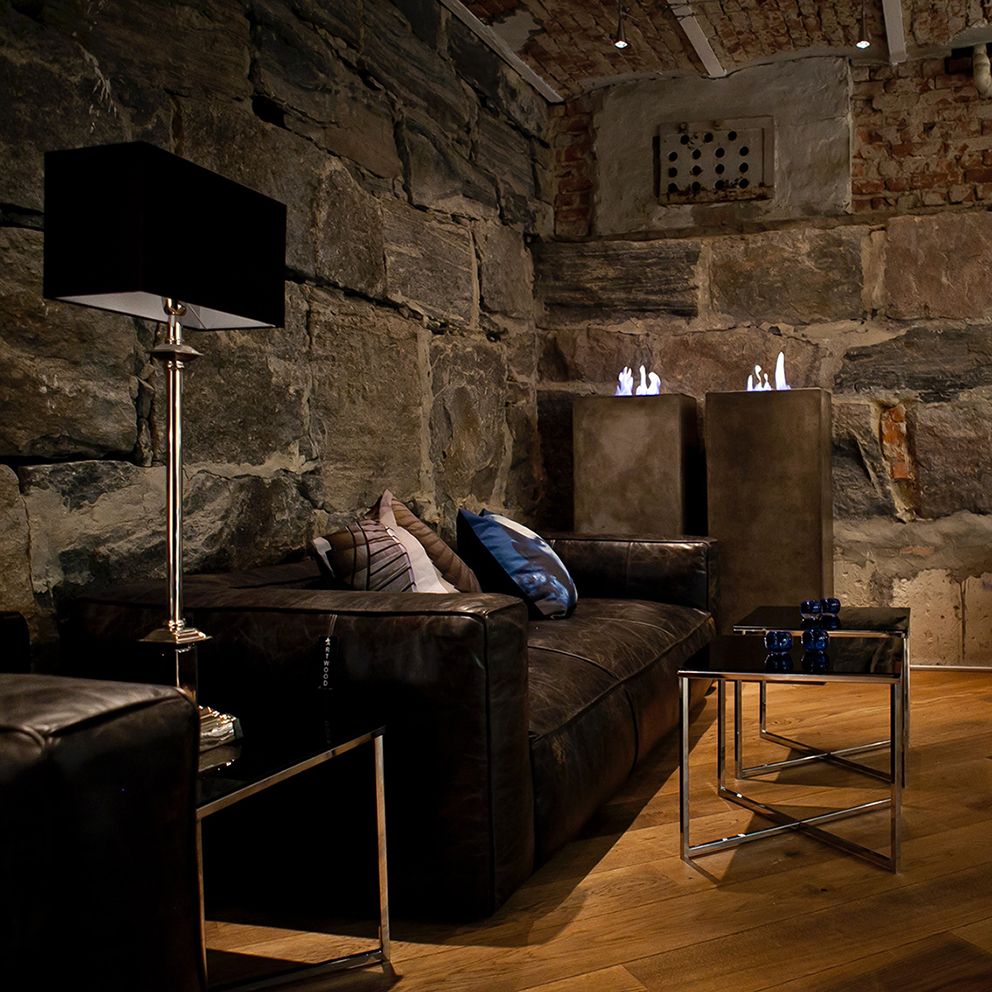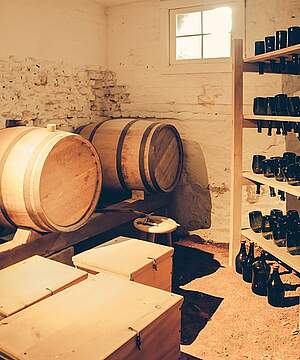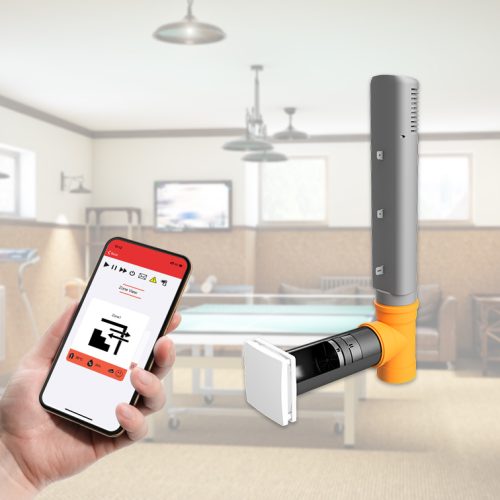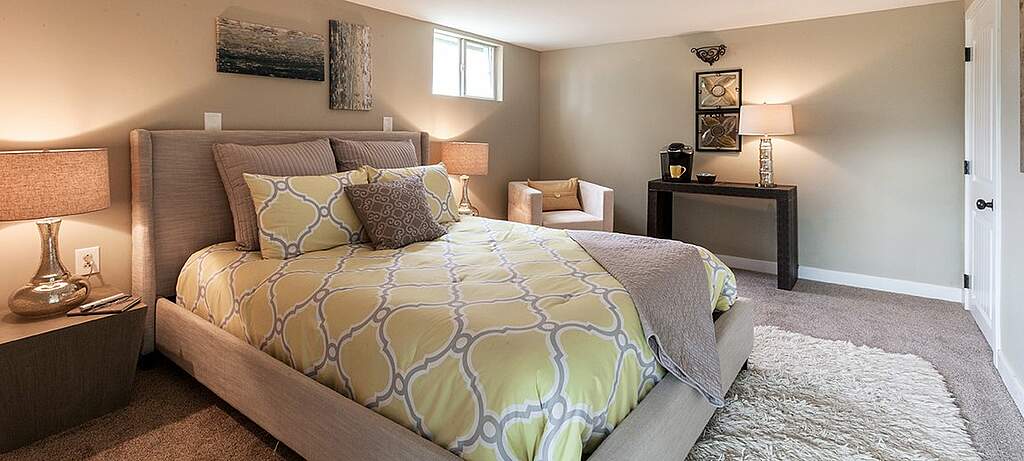Basement ventilationFresh air in, moisture out
When the temperatures rise in spring, many feel the urge to open windows and doors wide and let fresh air into all rooms. This is especially true of the basement, which is often prone to a musty smell. But doing so can only make the problem worse. Because located underground, the cellar is the coldest room in the house and is therefore at risk from moisture damage: If you let warm, humid air into the rooms from outside, it will cool down quickly inside and condense on the walls. Because cold air can absorb less moisture and the excess moisture is absorbed by the cellar walls and pulls into the masonry. Little by little, large-scale mold develops.
In the area in contact with the ground, there are also no joints and cracks for a natural exchange of air and the exchange of air through windows is also less, because these are either smaller and lower or not present at all. In this case, cellars need separate ventilation for the fresh air supply. We explain to you what you have to consider when ventilating the basement.

Causes of dampness in the basement
How susceptible a basement is to moisture damage depends, on the one hand, on the construction method: In new buildings with insulated basement floors, there are usually fewer problems than in houses that were built before 1970: If a basement is well insulated and has dry outer walls, it can be As a rule, you can avoid summer condensation by ventilating the basement properly. However, if there is water damage, leaky windows or ailing masonry, correct cellar ventilation cannot do anything against the damage, as too much moisture is permanently present or entering.
On the other hand, when it comes to moisture damage, the decisive factor is whether the rooms are inhabited or uninhabited. Party rooms and basement apartments for guests are usually insulated and can be heated, so that the basement never cools down too much and the contrast to the outside temperature is also less pronounced in summer.
The number one cause of moisture damage is and remains incorrect behavior when ventilating the basement – above all through a permanently tilted window when the outside temperature is warm and the inside temperature is cool.

How you can counteract this with heating and proper basement ventilation
Live webinars from the inVENTer ventilation school
Experience more exciting ventilation topics on Thursdays at 10 am & 3 pm!
The solutions for dehumidifying the basement seem obvious: By properly ventilating or even heating the basement, you can prevent musty smells, wet walls and the formation of mold. However, both strategies have a catch:
While correct basement ventilation is unproblematic in winter, it is impractical in summer. Because if you observe the rule that ventilation is only allowed when it is cooler outside than inside, you sometimes don’t have the opportunity to do so in summer or only for a few hours during the night.
In turn, heating the cellar incurs additional costs. In addition, you can no longer use your cellar as a cool storage place for wine, food, etc.
Practical tips:
- Before ventilating your basement, make sure that the outside temperature is lower than the inside temperature.
- Also, check the indoor climate with a humidity meter, a so-called hygrometer, and install a second one to measure the moisture content of the outside air: if the moisture content outside is not higher than inside, you should ventilate.
- In the case of hot summer temperatures, you should ventilate no more than once a day, in moderate temperatures you can exchange air two to three times a day.
- Please note that it is not possible to heat the cellar with the outside air when the temperature is hot - this cools down quickly and only ensures that the humidity increases suddenly.
- The air exchange should take place as quickly and effectively as possible: Open the basement windows as much as possible and, at best, ensure a draft.
- In summer, leave the basement windows open for a maximum of 20 minutes and then close them again completely.

The simple solution: automatic cellar ventilation with iV-Smart+ Sylt
Temperature difference controller and dew point control
If you want to make sure that nothing goes wrong when it comes to room air regulation, the air exchange can also be carried out through automatic cellar ventilation. This saves you from always having to wait for the right moment to ventilate the room – after all, this can be difficult at night or during the working day. Regardless of whether you opt for a ventilation system with or without heat recovery, two control modules are initially available for this purpose: the temperature difference controller and the dew point control.
A temperature difference controller is a switching device that can be used to control the basement ventilation depending on the outside and inside temperature: As long as the outside temperature does not exceed a certain value (it must be less than the sum of the inside temperature and six Kelvin), the connected devices are switched on automatically switched off. The temperature is measured using two sensors. With most differential temperature controllers, various switching settings can still be made – corresponding models are available from inVENTer.
With dew point control, automatic cellar ventilation takes place based on the dew point temperature. A sensor continuously measures the relative humidity and temperature of the outside and room air. These data are used to calculate and compare both dew points – ventilation is only carried out if the dew point outside is below the dew point of the indoor air and the outdoor air therefore has a lower water content than the indoor air. To illustrate how it works, imagine a cold glass bottle that is taken out of the refrigerator in summer: The glass immediately becomes damp from the outside because warm air hits the cold surface and the humidity there is deposited as water.
Ventilation system in the basement This is what you should pay attention to when buying
While dew point control and temperature difference controllers form the basis for automatic basement ventilation, you can still choose between ventilation solutions with or without heat recovery – depending on whether the rooms in the basement are occupied or unoccupied. You will find a detailed comparison of the various ventilation systems in this guide. Since decentralized ventilation systems are made up of several, specifically arranged ventilation devices in the outer walls, they enable individual ventilation of individual rooms in the house. This makes them ideal for including the basement as a separately defined ventilation zone. In this context, two modern ventilation systems are particularly recommended to you: The inVENTer Smart + Sylt ventilation system and the inVENTer Connect controller platform ensure permanent cellar dehumidification.
inVENTer Smart + Sylt – for inhabited cellars and basements
The inVENTer Smart + Sylt ventilation system is ideal for inhabited cellars or basements. The new XENION fan is installed, which significantly increases the air exchange rate of the fan. As a result, the air is constantly in motion – moisture is permanently removed and fresh air is supplied without the windows having to be opened regularly. In addition, the entire ceramic of the ventilation unit is flowed through more effectively with the help of the inVENTron® double air control unit. This guarantees a heat recovery of up to 87 percent. Like all inVENTer devices, this ventilation system is also easy to assemble: No complex pipe systems have to be laid through the house, a simple passage through the outer wall is sufficient, even below ground level. You can find out more about the inVENTer Smart + Sylt ventilation system here.
For a dry and well-air-conditioned cellar, inVENTer will also have fully automatic ventilation in its portfolio from May 2019, which, thanks to humidity and temperature sensors, determines the optimal air conditions completely autonomously and thus ensures permanent cellar dehumidification. With the wireless solution for room air regulation inVENTer Connect, ventilation control is more diverse and at the same time easier than ever before. The smart control system ensures the best air quality in your basement – regardless of whether the rooms are occupied or unoccupied, because ventilation can be implemented with or without heat recovery. It can be controlled fully automatically or individually according to your preferences and needs via a smartphone app. You can find out more about the inVENTer Connect controller platform here.

For a dry and air-conditioned cellar, inVENTer also has a fully automatic ventilation system in its portfolio that uses humidity and temperature sensors to determine the optimum air conditions completely autonomously, thus ensuring permanent cellar dehumidification. The wireless inVENTer Connect room air control solution makes ventilation control more versatile and easier than ever before. The smart control system ensures the best air quality in your cellar – regardless of whether the rooms are occupied or unoccupied, as the ventilation can be implemented with or without heat recovery. It can be controlled fully automatically or individually according to your preferences and needs via the “inVENTer Mobile” smartphone app. Find out more about the inVENTer inVENTer Connect here.
How does fully automatic basement ventilation with inVENTer work?
The optimum air conditions can be determined completely autonomously with the help of the humidity and temperature sensors:

ConclusionConclusion: tips for correct basement ventilation
Because the cellar is underground, there are a few things to consider when ventilating. If you ventilate incorrectly, you run the risk of warm, humid air penetrating, cooling down quickly and condensing on the cellar wall – the ideal breeding ground for mold. Therefore, caution is advised, especially in summer, when the outside temperature is usually well above the inside temperature. You then have to watch the right time to let fresh air in intermittently into the basement. Various tools are available for this purpose:
The simplest variant is measuring equipment in the form of thermometers and hygrometers, with which you can compare the temperature and moisture content of the air outside and inside. Difficulties can arise, however, if you are on the road a lot or are not prepared to deal with the issue of air exchange at any time of the day or night. In this case, automatic cellar ventilation can provide relief, based on sensors for determining temperature and humidity.
If the rooms in the basement are inhabited, a ventilation solution with heat recovery is recommended. If you opt for a decentralized ventilation system, you can define the basement as a separate ventilation zone and thus integrate it into the individual or automatic ventilation control of the house. This ensures permanent dehumidification in the basement.




